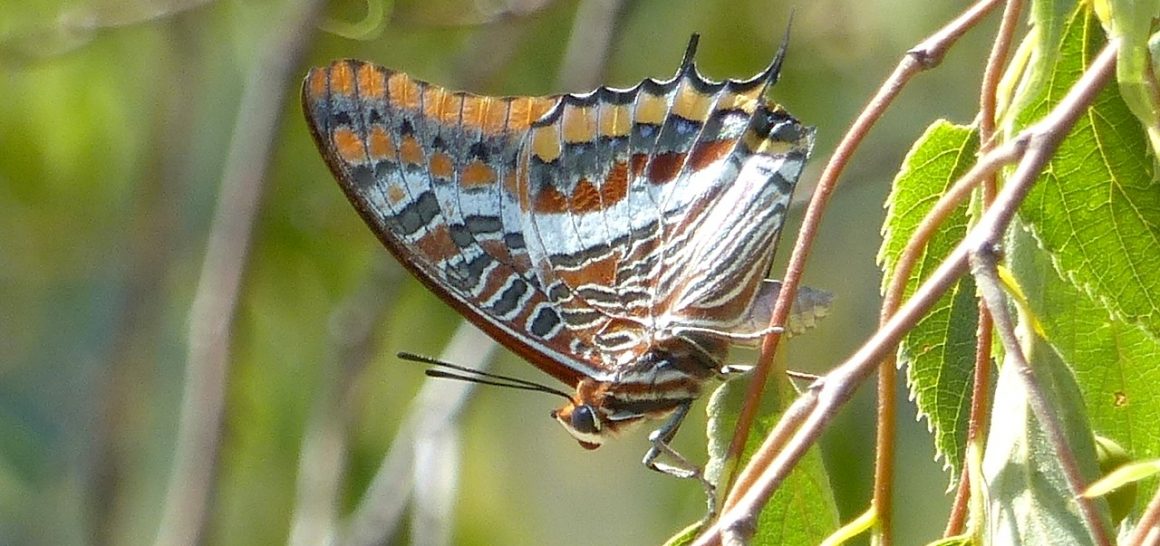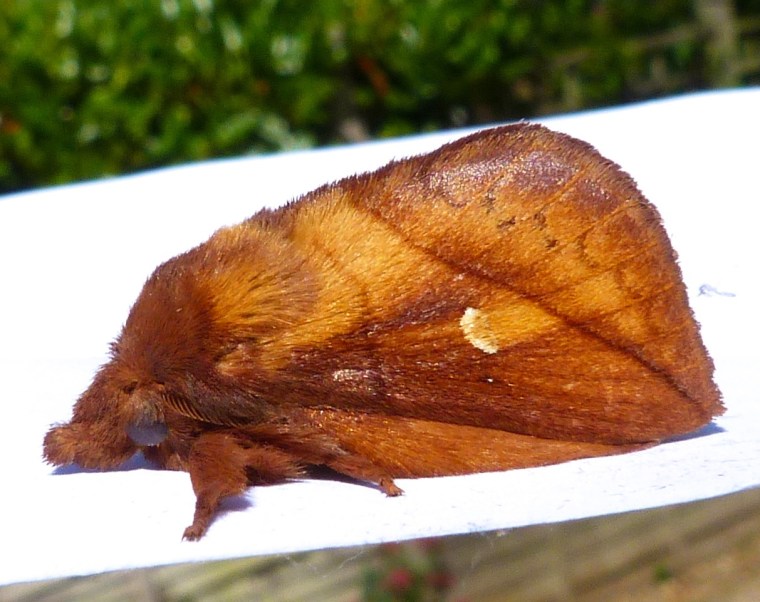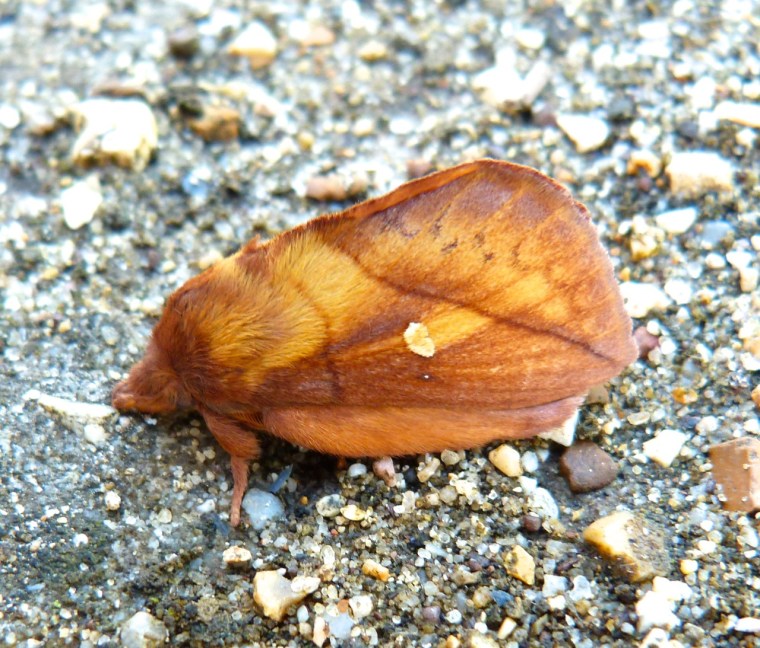I posted about the MAGPIE MOTH quite a while ago. Now I’ve come across its junior cousin, the small magpie moth. This one was in a hard to photograph corner (especially with an iPhone), and the images are neither good nor varied (it stayed completely still). But it’s another species to add to the list. Unlike the large magpie, the small variety has no yellow band across the wings,
Tag: Dorset Moths
ELEPHANT HAWK-MOTH CATERPILLAR IN DORSET
This fearsome creature was within an inch of being crushed by my heedless foot… but luckily it made a surprisingly agile lurch to one side just in time. I had no idea what it was, other than the largest caterpillar I have ever come across. Everyone else will know, of course, that it is the childhood form of what will become an elephant hawk-moth Deilephila elpenor. I haven’t knowingly seen one of those either.
NOTE Aug 2023. This post from 2017 on this largely defunct site was has attracted a lot of hits this month. It gives an excellent example of APOSEMATISM, defensive appearance and / or behaviour designed to repel predators. The Wiki link above will take you to a very good article on this topic, and is highly recommended if you want to know how animals of all kinds have developed many and varied protective methods
These caterpillars have three ‘poses’. The first is the usual day-to-day one, as it goes about its business with its little snout – or ‘trunk’ – extended. Note the four prominent ‘eye’ markings behind the head.
At the threat of danger, the caterpillar assumes its ‘elephant’ pose, tucking away its snout and humping its front end so that the 4 ‘eyes’ glare intimidatingly. From the front, there is the hint of a mouth, with two sharp eyes above it.

ROSY FOOTMAN: A MOTH, NOT A FLORID FLUNKEY
Until last weekend I’d never heard of, let alone seen, a ROSY FOOTMAN. I’m beginning to discover and enjoy the ornate to downright bizarre names that moths tend to be given. They have this in common with fly-fishing flies – the previous day I had caught a plump wild brown trout on the River Frome with a ‘Tups Indispensable’*.
High on an inside wall above a mirror, I saw a small pink item. On closer inspection, I could tell it was a moth, and one I had never seen before. I had to fetch a small stepladder to inspect it and (with some difficulty) to photograph it, . Meet a Rosy Footman.
The Rosy Footman is apparently a moth of southern England, in particular the southern-most counties from Kent to Cornwall. They fly in July and August. With such very particular markings, they are unmistakeable, but clearly I’d failed to notice one ever before… I’m glad I have now.
* For those concerned about these things, I use barbless hooks. I netted the fish, unhooked it still in the water and released it in about 30 seconds to fight another day. Or preferably to produce more wild stock.
PALE TUSSOCK MOTH, DORSET
Until a few days ago, I’m not sure I’d ever before seen a pale tussock moth Calliteara pudibunda that was on a wall inside our house. I took it outside and put it gently onto an old garden bench. 10 minutes later it was gone. As is so often the case I only had an iPhone with me at the time, so the photo above is a bit rough and ready. On the other hand, you get a good idea of the subtle and pretty colouring and marking of this moth – and as you see, it was intriguingly furry, with spotted legs.

I flicked through a couple of slightly basic butterfly / moth books we have, but could find nothing like this creature. So I checked out the FB page of UK MOTHS to find a match. Sure enough, others had queried the ID of this species so I discovered the name easily enough. I don’t think it is particularly rare. There were also plenty of other fascinating and indeed extraordinary-looking moths that are apparently quite common in the UK. A FB page that’s well worth taking a look at.
The pale tussock is a moth of spring / early summer, and its appearance seems to be distinctive enough to avoid confusion with other moth species. The other feature, only deployed once I’d got it outside the house, are its feathery antennae (below).
To make up for my rather poor photos, here is a really good one to make up for it, showing a pale tussock in all its glory…
JERSEY TIGER MOTHS IN FRANCE & ENGLAND
Jersey Tiger Moths Euplagia quadripunctaria, are widely distributed throughout Europe. Once rare in Britain, they are now increasingly found in the South of England. Recently we spotted one in the eastern Pyrenees one evening. It wasn’t very close and I had only a small camera with me so the results aren’t startling. However, the photos give a fair idea of this very pretty moth.
I knew at once what sort of moth this was, because we had found one – the only one I’ve ever seen before – in our garden in Dorset last year, and I to go through the usual online process to ID it.
DRINKER MOTH Euthrix potatoria – Dorset
I’ve recently posted images of a moth I have never previously seen / noticed MAGPIE MOTH. Here’s another one that’s new to me – the endearingly alcohol-suggestive ‘Drinker Moth’. I thought at first it was an Oak Eggar moth, until I checked the ID. In some positions it looks more like a tiny mammal – check out those little feet (photo 2), and furry tail (photo 7)… I rescued it from inside the house and took it outside. It didn’t much care for being on a sheet of paper and dropped to the ground, where it fluttered round rather feebly. In the end I put it on a flower to avoid inadvertent underfoot tragedy.





























